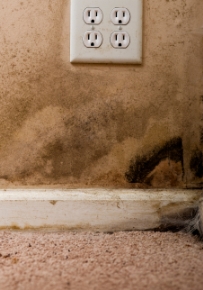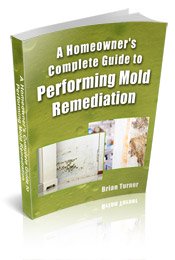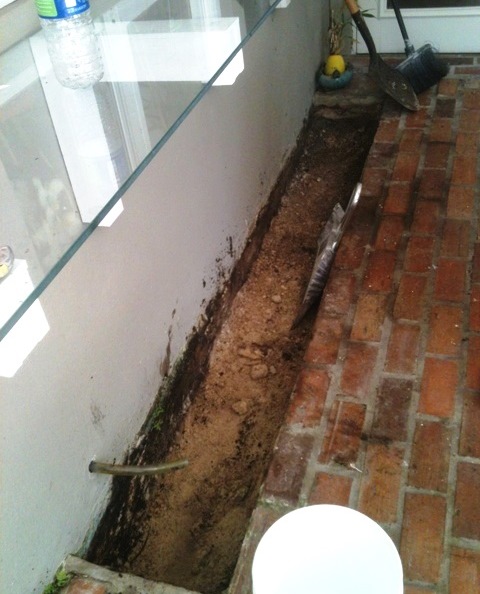Find a Mold Specialist Now
Click or Call, Toll-Free 24/7
How To Kill Black Mold
Learning how to kill black mold is more than just reading the labels on a few household cleaners, because the black mold cleanup process is a very in depth process. Mold spores are microscopic, which means that they are not always visible to the eye. A thorough cleanup process needs to be used to remove black mold and prevent it from returning in the future.
Why Black Mold is Dangerous

Even though mold may not seem like anything more than a small nuisance, it can actually cause damage to the health of the people who are exposed. In fact, black mold toxicity has been linked to serious health problems such as chronic sinus infections, autoimmune diseases, and even cancer. Small amounts of black mold exposure may cause minor health problems, and those symptoms will continue to get worse as the exposure continues.
If you find black mold within your home, it is best to begin the black mold cleanup process immediately in order to stop the exposure as soon as possible. But, don’t just dive in attempting to clean up the mold without any information, because certain steps need to be taken in order to protect your health, prevent cross contamination, and completely kill black mold.
Our recommendation is to use a professional to clean up the mold, but many people prefer to do the cleanup themselves. The Environmental Protection Agency recommends using a professional if the moldy area is more than 10 square feet, if contaminated water is involved, if the HVAC system is involved, or if you are having health issues.
Where Black Mold Grows
The most common areas for black mold growth are in the wet, damp areas of your home such as the bathroom or kitchen. Sometimes, a leaky pipe may cause mold to grow in unusual places, so keep any eye on the plumbing and repair any leaks as soon as possible. Also, keep an eye on other sources of liquid such as waterbeds or fish tanks, because these can cause the mold to grow behind the furniture or underneath the tank.
Another place that black mold may begin to grow is on the inside of windows, especially if fabric curtains are used. Condensation may occur on the windows, which creates the perfect environment for the mold. Additionally, the basement is a common area of mold growth, because the basement often has a higher humidity level since it is below ground.
How To Kill Black Mold And Safely Remove It
All of the black mold spores must be killed in order to stop the mold exposure that is occurring, and there are only a few specific cleaners that can effectively kill black mold. Don’t be fooled into thinking that your standard household cleaner can kill the mold spores, because a high quality biocide needs to be used during the black mold cleanup in order to sterilize the affected area. Some people mistakenly think that bleach will solve the problem, but bleach can be deceiving by removing the color of the mold without killing all the spores. Bleach is not effective on porous materials. It will not penetrate porous materials and kill all of the mold.
During the black mold cleanup, be sure to protect yourself by wearing protective gear. Take precautions to prevent the mold from spreading into other areas within the home by sealing off the area with large sheets of plastic and duct tape. Also, use a negative air machine to filter the airborne mold spores and prevent them from traveling outside of the contained area. A dehumidifier can be used to get rid of moisture and will prevent the mold from growing back.
The biocide should be used on all the areas that were affected by the mold because it will get rid of any remaining spores that are not visible. Before the remodeling process begins, be sure to allow the area to completely dry because any dampness may cause the mold to begin growing again. Once you kill black mold, you want to do everything that you can prevent future growth… if the mold begins to grow again you will need to start the entire black mold cleanup process from the beginning.
If You Need Help Treating Black Mold
We recommend contacting a black mold remediation professional if:
- You have black mold that covers a large surface area.
- Mold develops following a problem with contaminated water, such as water that may contain sewage.
- You have mold, or suspect you have mold, in your HVAC system.
- You have symptoms of exposure to black mold.
- You have health problems, including allergies, asthma or other respiratory disorders, or immune system disorders.
- You are pregnant.
Of course, if you aren’t sure about the best way to go about cleaning up black mold, you can always schedule a consultation with a professional. Most black mold remediation professionals offer free consultations, and even if you end up deciding to do the work yourself, you can get some free professional advice by scheduling a consultation.
Follow the link to find a Black Mold Remediation Professional in your area.
Return From Kill Black Mold To Our Getting Rid Of Black Mold Page
Black Mold Health Symptoms Home Page






